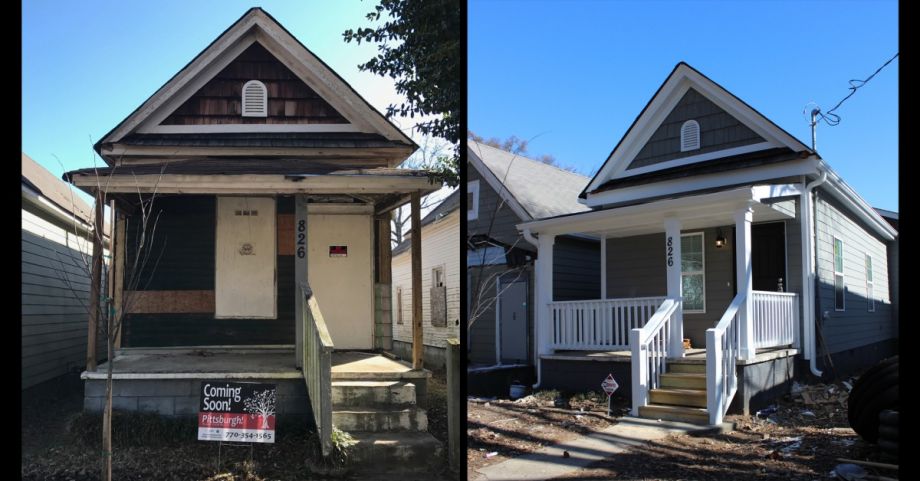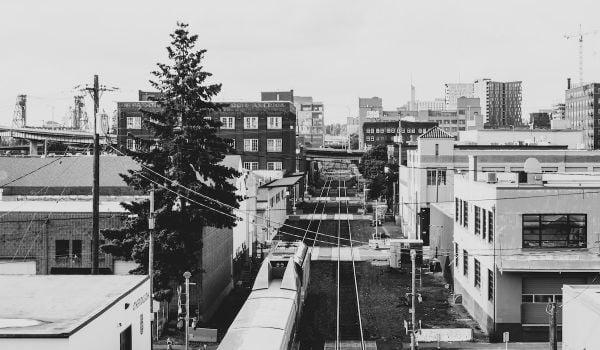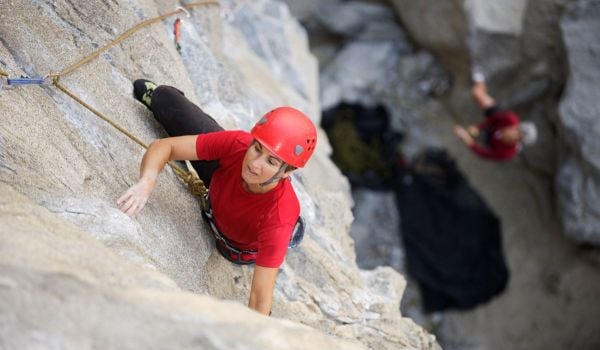During the foreclosure crisis of 2008 and 2009, Pittsburgh — not the steel city in Pennsylvania but the neighborhood in Atlanta — endured as much devastation as any place. The neighborhood had already lost thousands of residents in the last half of the 20th century. And those who remained, primarily Black, low-income Atlantans, were frequently “targets for subprime lending and other forms of mortgage fraud,” according to a recent report from the Annie E. Casey Foundation. Home values, that had been slowly rising prior to the crisis, suddenly dropped again. Vacancy was rampant.
The Annie E. Casey Foundation had been working on childhood poverty initiatives in Pittsburgh and surrounding neighborhoods in Atlanta since the early 2000s. Seeing how the wave of foreclosures had harmed the neighborhood, the Foundation took a step that nonprofits are often loath to take, says Natallie Keiser, a senior associate at the Foundation: It bought 53 properties.
“When we began the work, the values in the neighborhood were so depressed that no real estate developer would really enter the neighborhood because you could neither build nor redevelop a home [and earn a return],” Keiser says. “There was this tremendous cost gap. And so the [goal] was to try to begin rebuilding the housing market to the extent that others would also invest, because there were more vacant homes than we could possibly address.”
The Foundation’s report, “Affordable Housing in Pittsburgh: A Collaborative Approach to Neighborhood Development in Southwest Atlanta,” was released at the end of July. It details the Foundation’s efforts, in partnership with a group of local developers, nonprofits, and institutions, to stabilize the neighborhood’s housing market over the course of several years. The work incorporated neighborhood planning, community-safety initiatives, and developing, rehabilitating, and selling homes at affordable prices. A decade after the Foundation made its initial $3 million investment in properties, Keiser says, it is now at “a turning point in the work” — 43 of the 53 properties have been redeveloped, and the remaining ten have been transferred to other entities with plans to rehab or build new housing. With another recession underway due to the coronavirus pandemic, Keiser says she hopes other foundations and cities can learn from the long-term, collaborative approach to revitalization in Pittsburgh.
“It’s absolutely necessary, if you want to send a neighborhood in a positive trajectory, that you cannot do that without looking at the neighborhood holistically,” Keiser says.
After buying the vacant homes and lots, the Casey Foundation worked with the Atlanta Land Bank Authority to clear up ownership and title issues, and to clean up and secure the properties, according to the report. It started out hoping to rehab the homes and resell them to people at a range of incomes, from below 80 percent of area median income to well above median income, the report says. The rehabbed houses were offered for sale for $75,000 to $105,000, the report says, but the initial goal was very much focused on inviting investment into the neighborhood.
But a few years ago, amid growing concerns about how the Atlanta BeltLine trail project was driving up home prices in the neighborhoods it passed through, the Foundation and its partners changed gears. The portion of the BeltLine that is closest to Pittsburgh hasn’t been constructed yet, but the writing was on the wall. Instead of continuing to focus on mixed-income tenants, the Foundation decided to make its remaining investments in preserving affordable housing. And it started transferring properties to the Atlanta Land Trust.
The Atlanta Land Trust, like other community land trusts, owns land and sells the improvements to income-restricted residents to keep homes below market rate. Residents are able to share in the appreciation of home values over the course of time, but the land trust caps the amount they can earn in order to keep homes affordable for the next buyer. Under one of the resale formulas it uses, says Amanda Rhein, executive director of the Atlanta Land Trust, a property can appreciate 2 percent a year, or up to 20 percent over ten years. By contrast, she says, home values in some neighborhoods near Pittsburgh and adjacent to completed portions of the BeltLine have appreciated by 200 percent in just five years. The land trust has been slow to get off the ground — it was essentially an organizational shell for several years until Rhein was hired two years ago. But now, it owns ten properties, with another five under contract, she says. A hundred more are in the pipeline, and the land trust plans to acquire at least 300 properties over the next five years. The land trust is focused on BeltLine-adjacent neighborhoods, Rhein says.
“We know that very soon people are going to ‘discover’ Pittsburgh, and you’re going to see appreciation there,” Rhein says. “So we’re trying to get control of as much property there as we can, because we know the impact it will have.”
One of the challenges to acquiring property even in neighborhoods with a lot of vacancy is that it can be hard to track down the owners, either because properties have a lot of liens or they’ve been handed down to heirs who are no longer around, Rhein says. So having those issues cleared by the Foundation and the Land Bank ahead of time was a leg up, she says.
A third of the properties that the Foundation initially invested in will be transferred to the land trust, according to the Foundation’s report. Of the houses that have already been occupied, according to the report, the residents earn an average of $42,000, or 73 percent of the area median income, while 72 percent are Black, 22 percent are white, and 6 percent are Asian. Overall, the neighborhood is 95.4 percent Black, 2.1 percent white, and 0.3 percent Asian, the report says.
The Casey Foundation report concludes that collaboration among a wide range of local institutions is key to helping revitalize property and keep it affordable. Land trusts and land banks were especially important to the work in Pittsburgh. Clustering acquisitions in a small area is effective too, the report says, because it helps to “spur optimism and attract buyers.” In one phase of the project, for example, the Foundation worked with the Atlanta Neighborhood Development Partnership, a local nonprofit developer, to rehab 11 homes on two adjacent blocks, which allowed for efficiencies in construction and planning, the report says. Most importantly, investing in property when neighborhoods are at their most challenged helps create opportunities for both revitalization and affordability.
“The best time to purchase property in neighborhoods that have experienced disinvestment is when values are low; this will allow funders to oversee as much property as possible before market pressures take effect,” the report says. “The average cost of acquisition on Casey’s 53 vacant properties in 2009 was approximately $30,000. Now, similar vacant properties are selling for closer to $100,000.”
This article is part of Backyard, a newsletter exploring scalable solutions to make housing fairer, more affordable and more environmentally sustainable. Subscribe to our weekly Backyard newsletter.

Jared Brey is Next City's housing correspondent, based in Philadelphia. He is a former staff writer at Philadelphia magazine and PlanPhilly, and his work has appeared in Columbia Journalism Review, Landscape Architecture Magazine, U.S. News & World Report, Philadelphia Weekly, and other publications.
Follow Jared .(JavaScript must be enabled to view this email address)


















